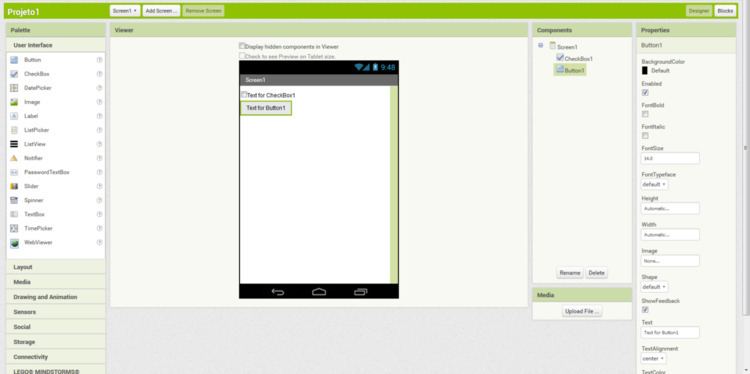Original author(s) Written in Java, Kawa Scheme Platform Android | Stable release Beta Operating system | |
 | ||
Developer(s) MIT Media Lab, MIT Computer Science and Artificial Intelligence Lab | ||
App Inventor for Android is an open-source web application originally provided by Google, and now maintained by the Massachusetts Institute of Technology (MIT).
It allows newcomers to computer programming to create software applications for the Android operating system (OS). It uses a graphical interface, very similar to Scratch and the StarLogo TNG user interface, which allows users to drag-and-drop visual objects to create an application that can run on Android devices. In creating App Inventor, Google drew upon significant prior research in educational computing, as well as work done within Google on online development environments.
App Inventor and the projects on which it is based are informed by constructionist learning theories, which emphasizes that programming can be a vehicle for engaging powerful ideas through active learning. As such, it is part of an ongoing movement in computers and education that began with the work of Seymour Papert and the MIT Logo Group in the 1960s and has also manifested itself with Mitchel Resnick's work on Lego Mindstorms and StarLogo.
History
The application was made available through request on July 12, 2010, and released publicly on December 15, 2010. The App Inventor team was led by Hal Abelson and Mark Friedman. In the second half of 2011, Google released the source code, terminated its server, and provided funding for the creation of The MIT Center for Mobile Learning, led by App Inventor creator Hal Abelson and fellow MIT professors Eric Klopfer and Mitchel Resnick. The MIT version was launched in March 2012.
On December 6, 2013 (the start of the Hour of Code), MIT released App Inventor 2, renaming the original version "App Inventor Classic" Major differences are:
Open Blocks is distributed by the Massachusetts Institute of Technology's Scheller Teacher Education Program (STEP) and is derived from master's thesis research by Ricarose Roque. Professor Eric Klopfer and Daniel Wendel of the Scheller Program supported the distribution of Open Blocks under an MIT License. Open Blocks visual programming is closely related to StarLogo TNG, a project of STEP, and Scratch, a project of the MIT Media Lab's Lifelong Kindergarten Group. App Inventor 2 replaced Open Blocks with Blockly, a blocks editor that runs within the browser.
As of May 2014, were 87 thousand weekly active users of the service and 1.9 million registered users in 195 countries for a total of 4.7 million apps built.
As December 2015, had 140k weekly active users and 4 million registered users in 195 countries, nun total of 12 million built applications.
